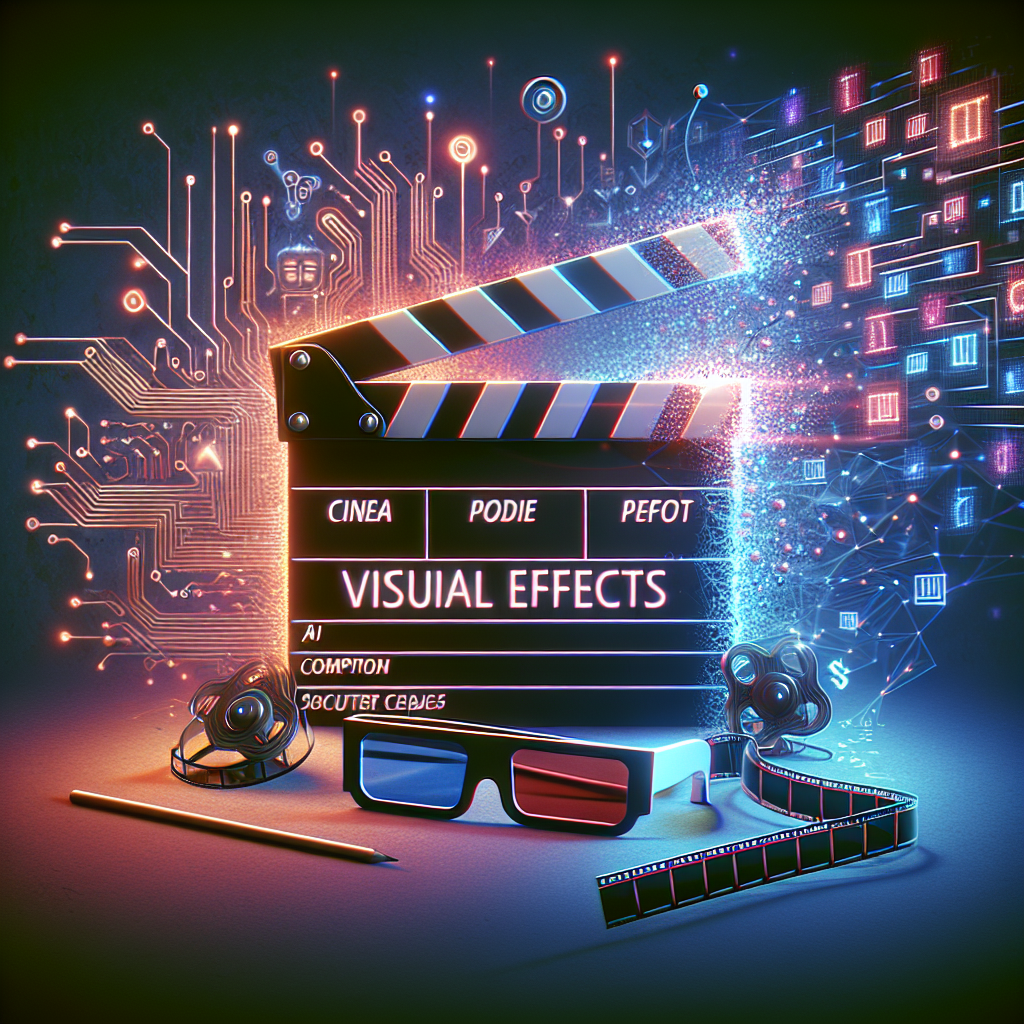Artificial Intelligence (AI) and Visual Effects (VFX) have revolutionized the film industry, allowing filmmakers to create breathtaking cinematic spectacles that were once thought impossible. AI has significantly impacted the world of VFX, providing filmmakers with powerful tools to enhance their storytelling and bring their creative visions to life on the big screen. In this article, we will explore the ways in which AI and VFX have transformed the world of cinema and discuss how these technologies are shaping the future of visual storytelling.
AI and VFX: A Dynamic Duo
Visual effects have been a staple in filmmaking for decades, allowing filmmakers to create fantastical worlds, creatures, and special effects that captivate audiences and enhance the overall viewing experience. However, the process of creating these effects has traditionally been time-consuming and labor-intensive, requiring skilled artists to manually create and animate each element.
Enter AI, a game-changing technology that has revolutionized the world of VFX. AI algorithms are now being used to automate many aspects of the visual effects process, making it faster, more efficient, and more cost-effective. AI can be used to generate realistic textures, simulate natural phenomena like fire and water, and even create lifelike digital characters. This allows filmmakers to bring their creative visions to life in ways that were previously impossible.
One of the most exciting applications of AI in VFX is the use of machine learning algorithms to generate realistic facial animations. Traditionally, creating realistic facial animations required artists to painstakingly animate each frame by hand, a process that could take weeks or even months. With AI, filmmakers can now use algorithms to analyze real-life footage of actors and generate realistic facial animations automatically. This not only saves time and money but also allows filmmakers to create more expressive and emotive digital characters.
AI is also being used to enhance the realism of visual effects. For example, AI algorithms can be used to analyze real-world footage and generate realistic lighting and shading effects that seamlessly blend with the live-action elements of a scene. This level of realism was previously difficult to achieve with traditional VFX techniques, but AI has made it possible to create truly immersive and lifelike visual effects.
The Future of Visual Storytelling
The integration of AI and VFX has opened up a world of possibilities for filmmakers, allowing them to create cinematic spectacles that push the boundaries of what is possible on screen. As AI technology continues to advance, we can expect to see even more groundbreaking applications of AI in VFX, from the creation of photorealistic digital doubles to the generation of entire virtual worlds.
One of the most exciting developments in the world of AI and VFX is the rise of deep learning algorithms. Deep learning is a subset of machine learning that uses neural networks to analyze and learn from vast amounts of data. These algorithms are capable of generating incredibly realistic visual effects, from lifelike digital characters to stunningly realistic environments.
Deep learning algorithms have already been used in several high-profile films to create groundbreaking visual effects. For example, in the film “Blade Runner 2049,” deep learning algorithms were used to generate realistic facial animations for the character Rachael, played by actress Sean Young. The result was a stunningly lifelike digital double that seamlessly blended with the live-action footage.
FAQs
Q: How is AI used in visual effects?
A: AI is used in visual effects to automate many aspects of the VFX process, from generating realistic textures to simulating natural phenomena like fire and water. AI algorithms can also be used to analyze real-life footage of actors and generate realistic facial animations automatically.
Q: What are some examples of AI in visual effects?
A: One example of AI in visual effects is the use of deep learning algorithms to generate realistic facial animations for digital characters. Another example is the use of AI to analyze real-world footage and generate realistic lighting and shading effects that blend seamlessly with live-action elements.
Q: How is AI shaping the future of visual storytelling?
A: AI is shaping the future of visual storytelling by enabling filmmakers to create cinematic spectacles that push the boundaries of what is possible on screen. As AI technology continues to advance, we can expect to see even more groundbreaking applications of AI in VFX, from the creation of photorealistic digital doubles to the generation of entire virtual worlds.
In conclusion, AI and VFX have transformed the world of cinema, allowing filmmakers to create breathtaking visual effects and cinematic spectacles that were once thought impossible. As AI technology continues to advance, we can expect to see even more groundbreaking applications of AI in VFX, pushing the boundaries of visual storytelling and bringing audiences even closer to the magic of the silver screen.

